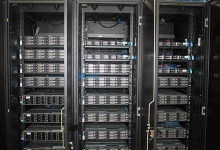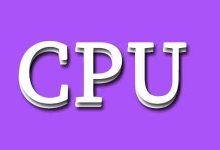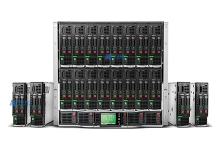linux集群管理软件
随着互联网技术的快速发展,大型互联网应用的出现引起了集群技术的广泛关注。集群作为一种高可用、高性能的计算模式,可以将多台计算机组合成一台超级计算机,提高计算效率,同时保证系统的可靠性和容错性。
在集群中,集群管理软件是非常重要的一部分。集群管理软件包括资源管理、任务调度、负载均衡、数据同步等模块,它们相互配合,协调集群中各个节点之间的运作。Linux作为一种流行的操作系统,也有很多集群管理软件可供选择。
常见的Linux集群管理软件
1. Pacemaker
Pacemaker是一个成熟的开源集群管理软件,它采用了一种分布式的架构,不仅能够对节点进行监控和管理,还可以进行资源管理和任务调度。Pacemaker支持多种服务,包括LVM、IP地址、文件共享等,可以满足不同的需求。
2. Corosync
Corosync是一个开源的群集通信引擎,用于在集群中进行通信。它支持多种协议,包括UDP、TCP和InfiniBand等。Corosync还提供了一些工具,用于协调集群中各个节点之间的运作,如管理节点状态、资源的锁和释放等。
3. DRBD
DRBD是一个开源的分布式块设备,用于在集群中进行数据同步。它采用一种镜像技术,将一个节点上的数据实时**到另一个节点上,保证了数据的可靠性和一致性。DRBD还支持多个数据备份和磁盘快照等功能,可以保证系统的高可用性和数据的安全性。
各种集群管理软件的优缺点
1. Pacemaker
优点:
稳定性高,已在很多生产环境得到验证
支持多种服务,可以满足不同的需求
缺点:
需要较长的学习周期,上手难度较高
配置复杂,容易出错
2. Corosync
优点:
通信性能高,网络负载小
灵活性强,可以支持多种协议
缺点:
不支持资源管理和任务调度
部署较为复杂,需要其他组件的支持
3. DRBD
优点:
数据同步速度快,实时性好
支持多个备份和磁盘快照等功能
缺点:
需要磁盘分区和文件系统的支持
数据同步可能存在延迟问题
总结
在Linux集群管理软件中,Pacemaker、Corosync和DRBD是常见的三种软件。每种软件都有自己的优缺点,用户需要根据自己的实际需求来选择合适的软件。无论选择哪种软件,都需要花费时间和精力进行学习和配置,以达到高可用和高性能的效果。
Linux Cluster Management Software
With the rapid development of Internet technology, the appearance of large-scale Internet applications has attracted widespread attention to cluster technology. As a highly available and high-performance computing mode, clustering can combine multiple computers into a supercomputer to improve computing efficiency while ensuring system reliability and fault tolerance.
In the cluster, cluster management software is a very important part. Cluster management software includes resource management, task sche****ng, load balancing, data synchronization and other modules, which coordinate the operation of various nodes in the cluster. Linux, as a popular operating system, also has many cluster management software to choose from.
Common Linux Cluster Management Software
1. Pacemaker
Pacemaker is a mature open-source cluster management software, which adopts a distributed architecture. It can not only monitor and manage nodes, but also manage resources and schedule tasks. Pacemaker supports multiple services, including LVM, IP addresses, file sharing, etc., and can meet different needs.
2. Corosync
Corosync is an open-source cluster communication engine that is used for communication in the cluster. It supports multiple protocols, including UDP, TCP, and InfiniBand. Corosync also provides some tools for coordinating the operation of various nodes in the cluster, such as managing node status, resource locks and releases.
3. DRBD
DRBD is an open-source distributed block device used for data synchronization in the cluster. It uses a mirroring technology to replicate data from one node to another in real time, ensuring data reliability and consistency. DRBD also supports multiple data backups and disk snapshot functions, ensuring system high availability and data security.
Advantages and disadvantages of various cluster management software
1. Pacemaker
Advantages:
High stability and already verified in many production environments
Support a variety of services to meet different needs
Disadvantages:
Need a long learning cycle with high learning difficulty
Complex configuration that is prone to errors
2. Corosync
Advantages:
High communication performance with low network load
Flexible to support a variety of protocols
Disadvantages:
Do not support resource management and task sche****ng
Complex deployment that requires support from other components
3. DRBD
Advantages:
Fast data synchronization with good real-time performance
Support multiple backup and disk snapshot functions
Disadvantages:
Need support from disk partition and file system
Data synchronization may have delay issues
Summary
In Linux cluster management software, Pacemaker, Corosync, and DRBD are the common three software. Each software has its own advantages and disadvantages. Users need to choose the appropriate software based on their actual needs. No matter which software is chosen, it takes time and effort to learn and configure to achieve high availability and high performance effects.
7357

 国外主机测评 - 国外VPS,国外服务器,国外云服务器,测评及优惠码
国外主机测评 - 国外VPS,国外服务器,国外云服务器,测评及优惠码














